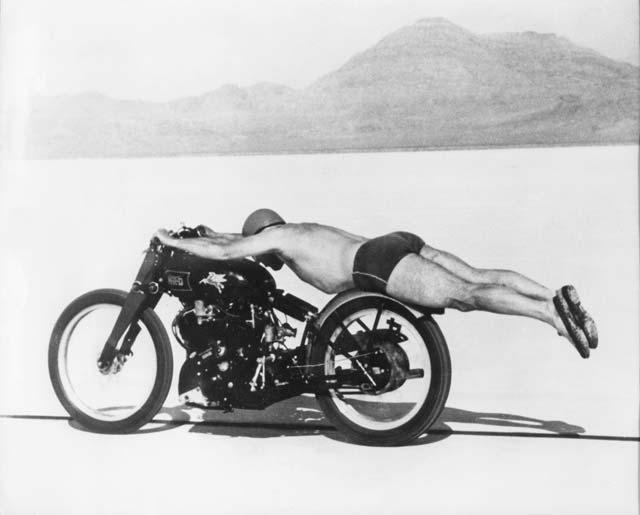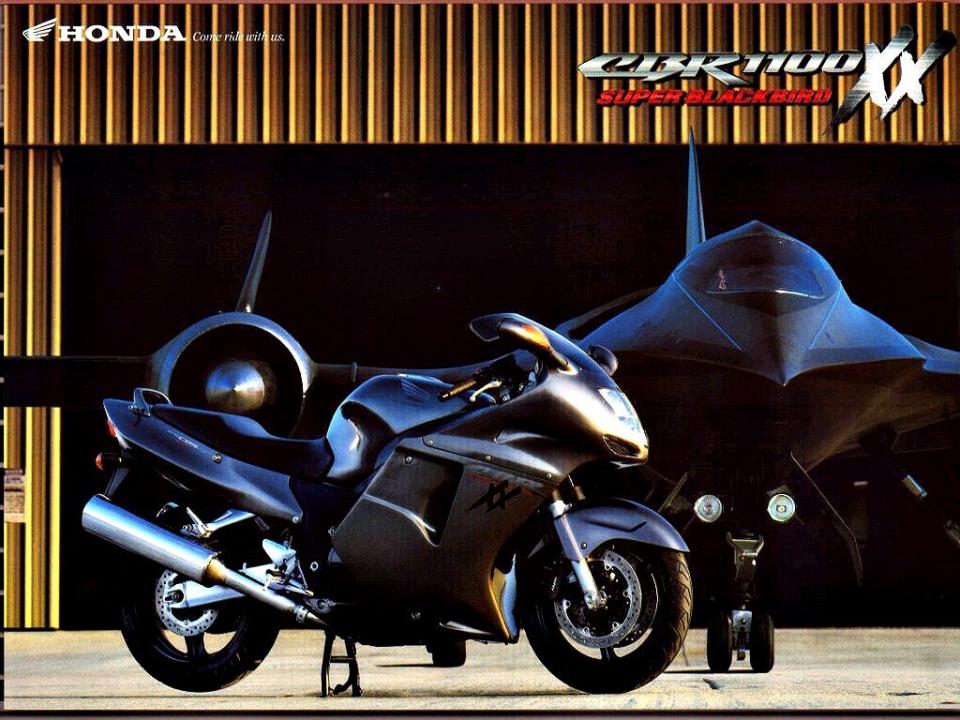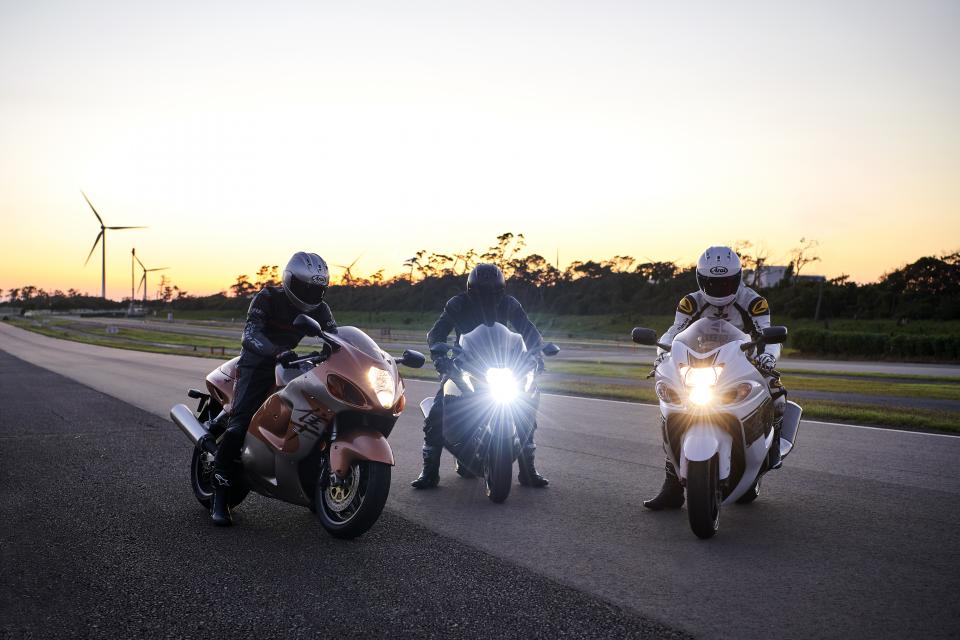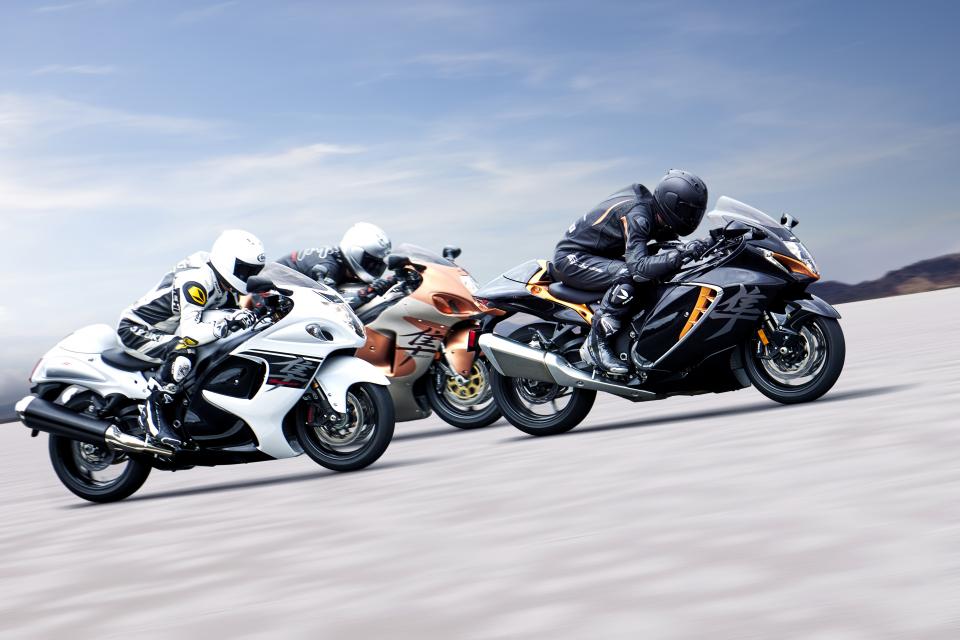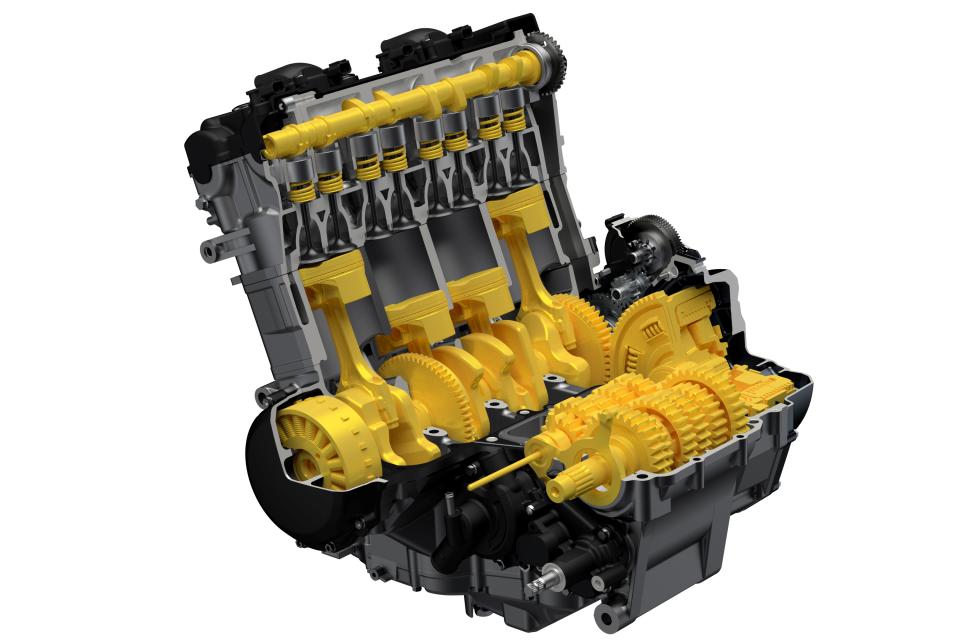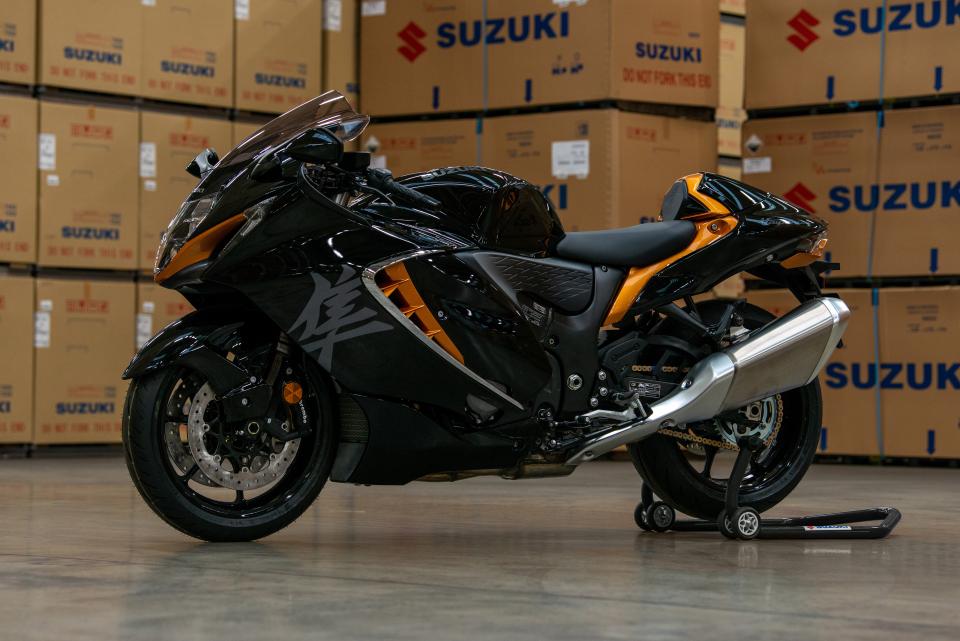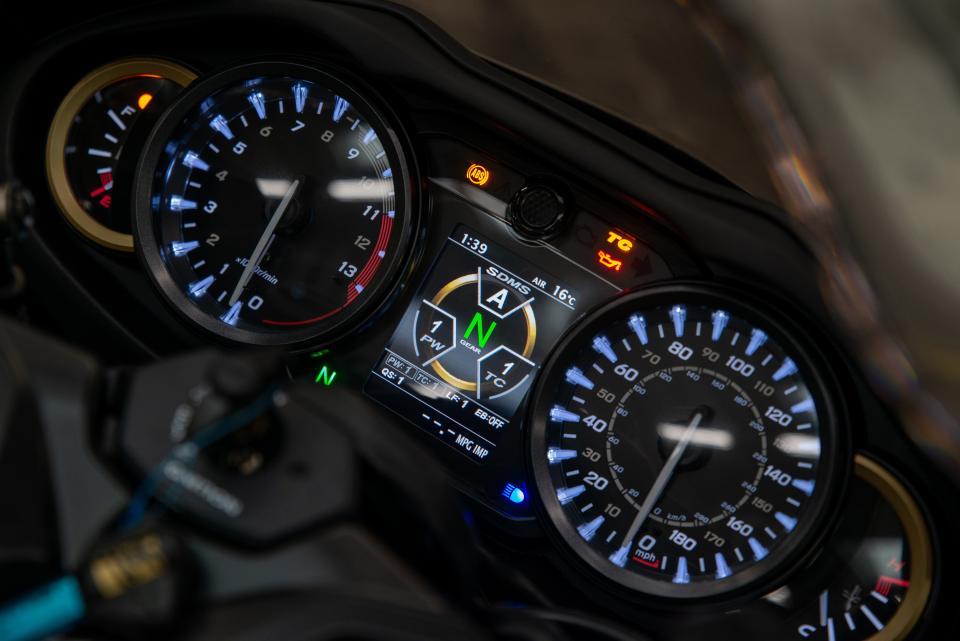Way back in the day, before the Second World War, the pioneers on two wheels were busy outdoing each other at the fastest speed in a straight line.
They had gone from "pedal assisted bicycles" with a top speed of 48 km/h to real motorcycles with a top speed of 160 km/h.
After the war, the emphasis shifted to performance in the broader sense of the word.
Rollie Speed, lying in his swimming trunks on the saddle of his motorcycle, went a whopping 240 km/h in 1949 over the Bonneville salt flat. Crazy Americans...
Since 1950ies the innovations in the motorcycle world have followed each other in rapid succession: water cooling, disc brakes, more than two valves per cylinder, aluminum deltabox frames, turbos...you name it.
Still, it takes until 1984 before a standard production motorcycle is able to reach 240 km/h again.
The Kawasaki ZX-11, Bimota YB6 (with a Yamaha FZR1000 block), the Kawasaki ZX-11 respectively are at the top of the list with the highest top speed.
The 1996 Honda CBR1100XX, nicknamed the Super Blackbird, can reach speeds of up to 285 km/h. Almost all Japanese manufacturers compete for the highest honor, but one seems to be holding back, Suzuki.
In 1999 Suzuki amazed the world press with the GSX1300R, better known as Hayabusa.
That name is no coincidence, it is Japanese for peregrine falcon and that is precisely the natural enemy of the blackbird.
Who wants to hunt must be faster and the Busa certainly is. Where the other Japanese manufacturers made their engines a few km/h faster every year,
Suzuki beat that considerably with about 20 km/h and a top speed of over 300 km/h.
The competition was not amused and wanted revenge and that's what happened. There were even rumors that Kawasaki would work on a ZX-12R that would reach a top speed of 322 km/h.
Motorcycle enthusiasts were thrilled by this power struggle between the Japanese manufacturers, but European politicians were less happy.
They considered engines that can reach 300+ dangerous and here and there voted to introduce an import ban.
Those voices were apparently so loud that the motorcycle manufacturers jointly decided in 2000 to limit their engines to 300 km/h.
Thanks to this gentlemen's agreement, the record is therefore still officially in the name of the Hayabusa.
Little exotic engineering, the GSX1300R had a conventional in-line water-cooled four-valve engine with four valves per cylinder.
It was mainly a large and incredibly powerful engine with a power of 173 hp at the crankshaft.
The engine is atmospheric, but breathes via a so-called ram-air system, creating a higher pressure in the intake section.
It does of course increase the air resistance of the motorcycle, but the benefit achieved clearly outweighs that disadvantage.
In 2008, Suzuki presented the second generation, but this is actually more of a facelift.
The engine was overhauled in detail, with the power increased to 197 hp, but the chassis was taken over from its predecessor almost unchanged.
The bodywork was new, but still very recognizable. Unfortunately, the engine wasn't meeting the strict Euro4 rules, the bike was discontinued only last year and a lot of you, including us thought that's that - no more.
This week, Suzuki has revealed the MY2021 Hayabusa.
The new model is the result of 10 years of development. It uses the same 1340cc inline four, with updates for durability and efficiency and is now, of course, Euro5 compliant.
Lighter pistons, new camrods, and revised cams
Suzuki designers experimented with larger capacities engines for the Hayabusa, even a six cylinder be it in conjunction with a supercharger was briefly in the running. But, Suzuki claims, nothing was this efficient, reliable and durable then the already existing architecture.
And now the big questions - what is the new Hayabusa top speed? Well, Suzuki keeps honoring the gentlemen's agreement and claims a top speed of 299 km/h, no doubt electronically limited.
Instead, effort has been put into an improved bottom end power delivery, especially around 5 to 6000 rpm, and a more linear power curve.
This together with the work done to get the bike in line with the new Euro5 regulations means lower peak power, 5Nm less torque. But no worries, the new blackbird killer can show off with an improved zero to one hundred time.
Various chassis construction were tested during the development but Suzuki refined the predecessors chassis, now with perfect 50/50 weight distribution.
A new bike undoubtedly means new electronics, Suzuki calls it SIRS, short for Suzuki Intelligent Ride System. Ride by wire, six axes EMU is at the heart of the electronic package. With the introduction of ride by wire, three modes can be selected for the power delivery,
including hill control, traction control, anti-wheelie control and levels of engine braking.
The dashboard seems very Busa-like, one digital display surrounded by two analog clocks, one for rpm, one for speed. Very plain and unlike the current trend of pushing for bigger tft screens in front of the rider.
The Hayabusa is often derided for its looks, but knows that form clearly had to prioritize function here.
The faster you go, the more important aerodynamics becomes. Suzuki understood that and paid a lot of attention to the fairing.
Hayabusa designers have kept the original lines in mind, a more modern aggressive front end, the same smooth shapes, whereby the rider can perfectly disappear behind the cockpit.


